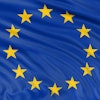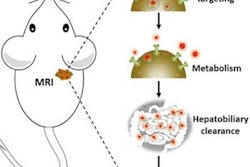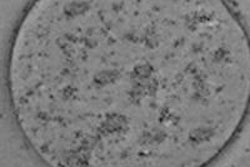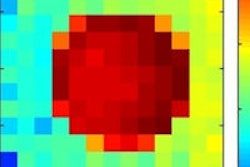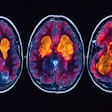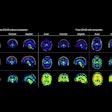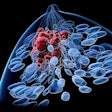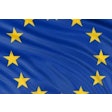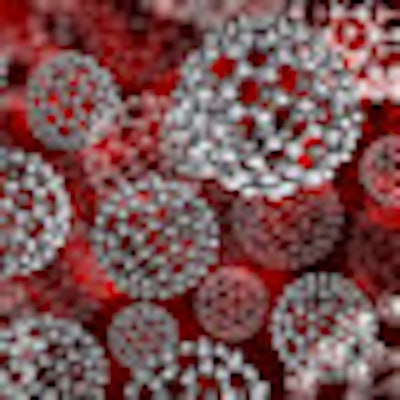
Nanotechnology in targeted imaging has been a central theme at the 14th Biennial Conference on Contrast-Enhanced Biomedical Imaging, held this week in Valencia, Spain. Some years ago, concepts in nanotechnology for medical imaging focused mainly on the development and application of nanoparticles, but now it is moving from passive compounds to active compounds and nanodevices. Still, only few commercialized products are available for patient use. Most are employed by researchers involved in discovery.
In the field of nanoparticles, a group from Bangor and York in the U.K. presented a new process for producing superparamagnetic iron oxide (SPIO) particles through a modified aqueous process.1 The nanoparticles produced are highly crystalline and have a very narrow size distribution. Particles with such properties are normally obtained by employing processes reaching very small yields and producing toxic byproducts that need to be removed. This new process has the advantage of being highly scalable, relatively cheap, and with no toxic byproducts, making the nanoparticles eminently suitable for biomedical applications. In vitro and in vivo MR imaging studies in rats and mice demonstrated higher r2 relaxivities compared with existing MRI contrast agents Resovist (mag-carboxydextran) and Endorem (mag-dextran).
New kinds of nanoparticles were also introduced by a collaboration of French groups from Strasbourg, Lyon, and Paris.2 Nanoparticles of different composition and morphologies, including spheres and cubes, proved to be efficient bioactive and biocompatible molecules. Such functionalized iron oxide nanoparticles (IONPs) have emerged as one of the most promising nanomaterials for biomedical applications, for instance for diagnostic imaging, delivering of therapeutic agents, and hyperthermia. For hyperthermia, the amount of heat generated by nanoparticles is highly dependent on their structure. Cubic-shaped and/or core-shell nanoparticles can modulate magnetism, resulting in a significant enhancement of magnetic heat induction for hyperthermia.
There is growing interest in the design of contrast agents that can be simultaneously used for different imaging techniques and obtain complementary information in a more efficient manner. For multimodal targeted imaging in T2-weighted MRI, CT, and ultrasound, researchers from San Sebastian, Spain, proposed gold-coated IONPs.3 The impact of the surrounding environment in the attenuation of gold coating was studied by performing the measurements in air or in water to better mimic in vivo conditions. Phantoms of water solutions of such nanoparticles at increasing concentrations were measured employing all three noninvasive imaging techniques. The resulting images showed these kinds of glyco-nanoparticles can effectively be used as multimodal contrast agents for targeted imaging.
The most widely used contrast agents in MRI are gadolinium-based. Most likely by separation of gadolinium from the binding chelate (dechelation), a sometimes deadly side effect can occur in patients with severe renal failure: nephrogenic systemic fibrosis (NSF). In order to offer an efficient alternative to currently marketed gadolinium-based agents and also to decrease the administered doses, researchers from France and Belgium have developed biocompatible and biodegradable gadolinium contrast agent-loaded nanohydrogels with Gd-DOTA being the encapsulated agent.4 The contrast enhancing power of this novel agent is far higher than that of the existing compound.
Nanosensors have also attracted increasing interest. A group from Madrid introduced two novel superparamagnetic sensors, one selective for calcium that allows the quantification of calcium based on the changes of its physicochemical properties.5 The second sensor is aimed at proteases.
Multimodal nanoplatforms for cell labeling, drug delivery, hyperthermia and MRI were presented by several collaborating groups from Belgium and France.6,7
A multinational research group from Spain, Portugal, and France showed a nanoplatform that can incorporate multiple physical and biological functionalities.8 The core of the platform is an hydrophobic polymer that may be used as a matrix for the encapsulation of inorganic nanoparticles (e.g., magnetic, luminescent, or radioactive). Organic bioactive molecules are attached to one end. This system has the advantage of a clean synthesis without byproducts and is easily controllable. The nanoplatform has been functionalized with radiochemical tracers (In-111), luminescent dyes (fluorescein, rhodamine, lanthanide compounds), and magnetic nanoparticles, and can be a powerful tool in imaging. Besides, it has also been functionalized with a therapeutical drug, an antibody, and an optical thermometer made of lanthanide complexes. Health safety of the system has been tested in cellular and in vivo assays. The nanoplatform is highly stable in biological fluids and shows low cell toxicity. The system possesses excellent performance in magnetic resonance imaging and hyperthermia.
The full abstracts of presentations about nanotechnology and other topics covered at the 14th Biennial Conference on Contrast-Enhanced Biomedical Imaging are available at www.esmr.eu.
References
- Timmis J, Hussain S, Wells S, et al. New controlled growth process (CGP) particles for MRI contrast agents.
- Walter A, Garofalo A, Lartigue L, et al. Dendronized magnetic nano-objects for MRI and hyperthermia.
- Carril M, Fernández I, Markuerkiaga I, et al. Gold-coated iron oxide nanoparticles for MRI, CT, and ultrasound multimodal imaging.
- Courant T, Roullin VG, Cadiou C, et al. Biocompatible nanohydrogels incorporating conventional MRI contrast agents: simple design, huge performances.
- Salinas B, Ruiz-Cabello J, Herranz F. Superparamagnetic nanosensors for the detection of cardiovascular biomarkers by magnetic resonance relaxometry and imaging.
- Stanicki D, Laurent S, Boutry S, et al. Carboxy-silane coated nanoparticles: An innovative platform for multiple biomedical applications.
- Laurent S, Montante S, Vander Elst L, et al. New multimodal platforms of nanodiamond for molecular imaging.
- Piñol R, Mohamed L, Bustamante R, et al. Multifunctional nanoplatform for biomedical applications.




